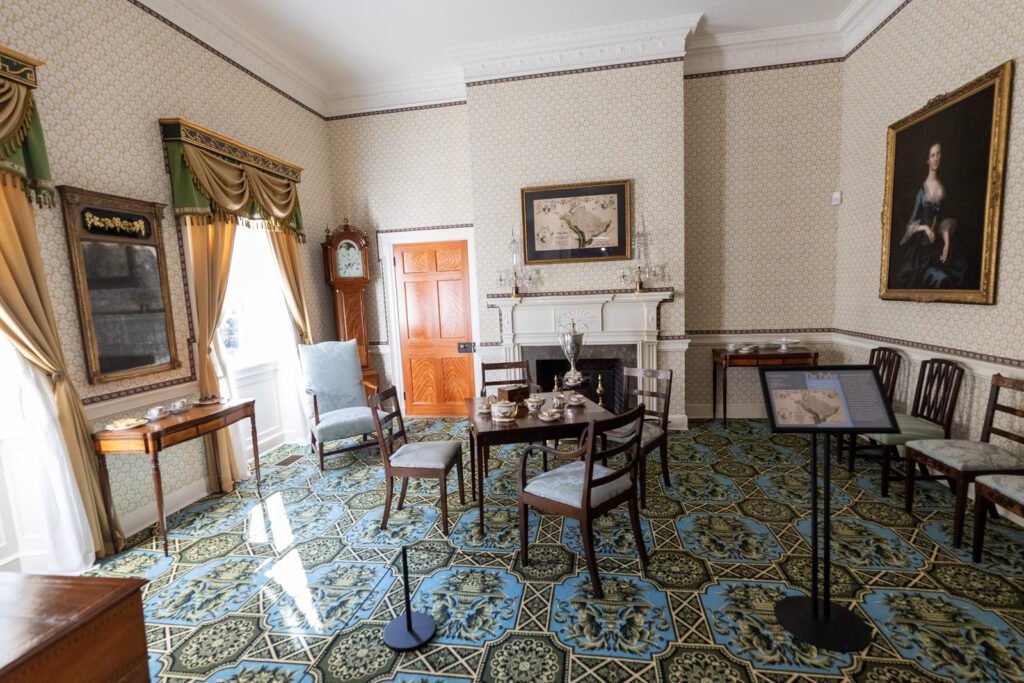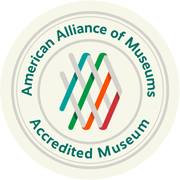The Parlor
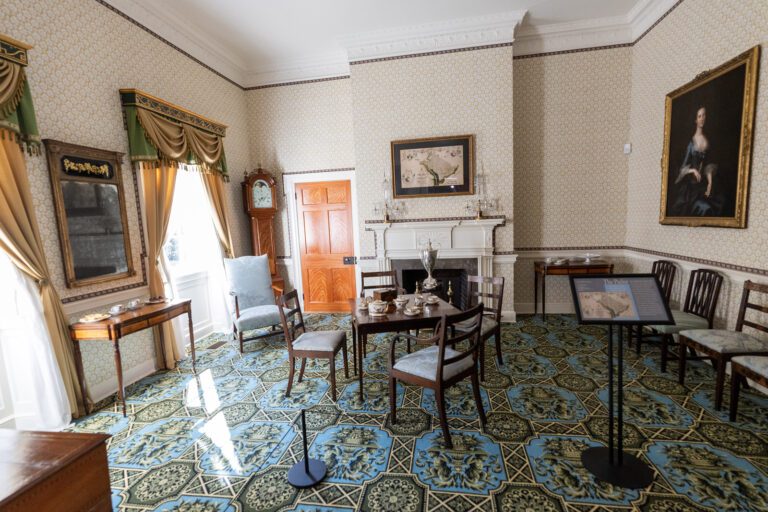
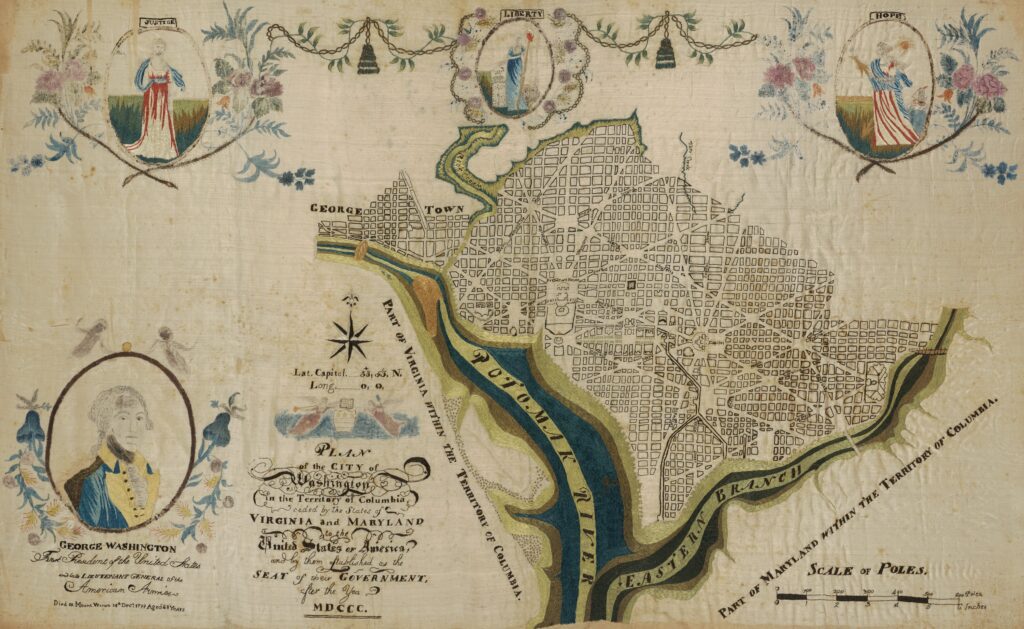
The Parlor was for entertaining and was meant to impress.
The room was outfitted with numerous chairs, which allowed the space to be rearranged for various social engagements. The contents of this fashionable, formal, and public facing room convey the host’s level of wealth, social standing, and sophistication with objects and details. These included handprinted wallpaper, an imported square piano, and portraits and other art on display. The Parlor also showcases an embroidered map of the District of Columbia from around 1800, which is based on Pierre L’Enfant’s plan of Washington City. This elaborate piece of embroidery, known as a sampler, was created by a young girl, Mary Magdalene Lemoine, as part of her early elite education.
The Carroll Family
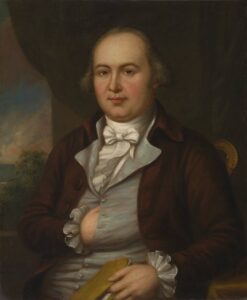
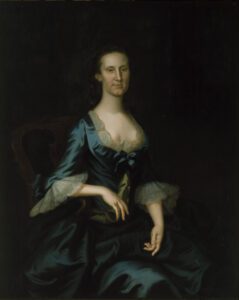
In 1813, Joseph Nourse sold Dumbarton House to Charles Carroll, a cousin of a signer of the Declaration of Independence. The Carroll family lived in this home, which they called Belle Vue, for only two years before they moved to New York. However, Carroll and his heirs retained ownership of the property and rented it out to a variety of tenants until 1841.
During his time at Dumbarton House, Charles Carroll owned and helped operate a paper mill on Rock Creek. Part of a prominent Maryland family, Carroll also had many connections to significant events in early American history. The Parlor features a portrait by John Wollaston of Carroll’s grandmother, Ann Rozier Carroll, whose family once owned the land now known as Anacostia. Mrs. Carroll’s portrait previously hung in Melwood Park, the home of her daughter Mary. The British broke into Melwood Park during the War of 1812, when one soldier reportedly stuck his bayonet through the right eye of the painting in search of hidden treasures. Oral histories from Carroll descendants recall that the hole remained for several decades until the painting was eventually conserved in England.
The Stoddert Children
The parlor also features the painting “The Benjamin Stoddert Children” by Charles Wilson Peale from 1789. The painting depicts the three children of Benjamin Stoddert, the first Secretary of the Navy, who served under President John Adams. The lower right background of the painting depicts the view from Georgetown over Analostan Island (now known as Teddy Roosevelt Island) and the Potomac River.
Peale painted this portrait at Halcyon House, another Federal period home in Georgetown. The Stodderts were a prominent family in this neighborhood, marked by Q Street having been named “Stoddert Street” throughout the nineteenth century.


